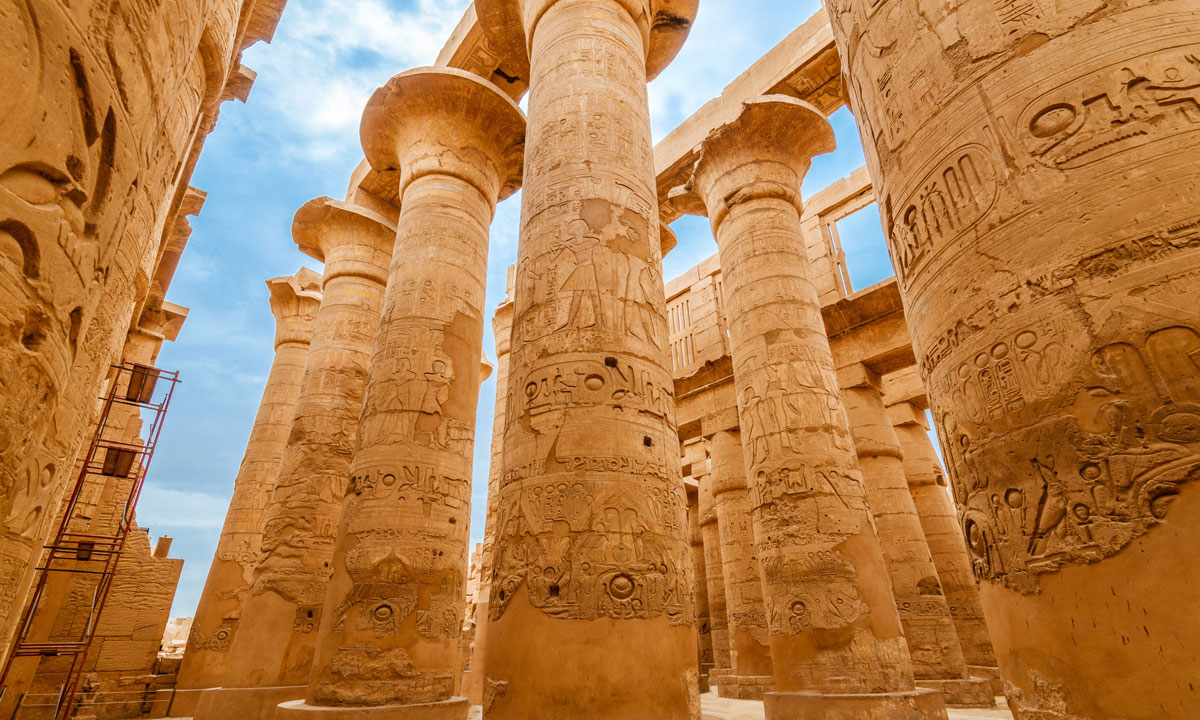
Luxor
Luxor, often referred to as the “world’s greatest open-air museum,” is a city located on the east bank of the Nile River in southern Egypt. It is renowned for its extensive collection of ancient Egyptian monuments and is a UNESCO World Heritage site. Here are key features and aspects of Luxor:
- Nile River: Luxor is situated along the Nile River, providing a picturesque setting with views of the river and the surrounding landscapes. The city is divided into two parts: the East Bank and the West Bank.
- East Bank: The East Bank of Luxor is the modern urban center, where most of the hotels, restaurants, and shops are located. Luxor Temple and Karnak Temple, two major ancient Egyptian temples, are also situated on the East Bank.
- Luxor Temple: This temple, dedicated to the Theban Triad of Amun, Mut, and Khonsu, is located in the heart of the modern city. It is illuminated at night, creating a stunning view along the Nile.
- Karnak Temple Complex: Karnak is a vast complex of temples, chapels, and pylons dedicated to various deities. It is one of the largest religious complexes in the world and a must-visit site for its grandeur and historical significance.
- West Bank: The West Bank of Luxor is an archaeological treasure trove, home to numerous tombs, temples, and monuments.
- Valley of the Kings: This ancient burial ground is famous for the tombs of pharaohs, including Tutankhamun. Visitors can explore several elaborately decorated and well-preserved tombs.
- Valley of the Queens: This site contains tombs of queens, princesses, and high officials from the New Kingdom period.
- Mortuary Temple of Hatshepsut: Also known as Deir el-Bahari, this temple is dedicated to the female pharaoh Hatshepsut and is carved into the cliffs of the western bank.
- Colossi of Memnon: These two massive stone statues of Amenhotep III are among the most iconic landmarks in Luxor.
- Luxor Museum: Located on the East Bank, the Luxor Museum houses a collection of artifacts from the region, including pieces from the tombs in the Valley of the Kings.
- Cultural and Religious Significance: Luxor holds great cultural and religious importance as it was the capital of ancient Egypt during the New Kingdom. The city is often associated with the divine and was considered a center for religious ceremonies and festivals.
- Hot Air Balloon Rides: Visitors to Luxor can enjoy breathtaking views of the ancient sites from hot air balloon rides that provide a unique perspective of the city and its surroundings.
Luxor’s wealth of archaeological wonders, combined with its stunning natural setting along the Nile, makes it a captivating destination for history enthusiasts, archaeologists, and tourists alike.